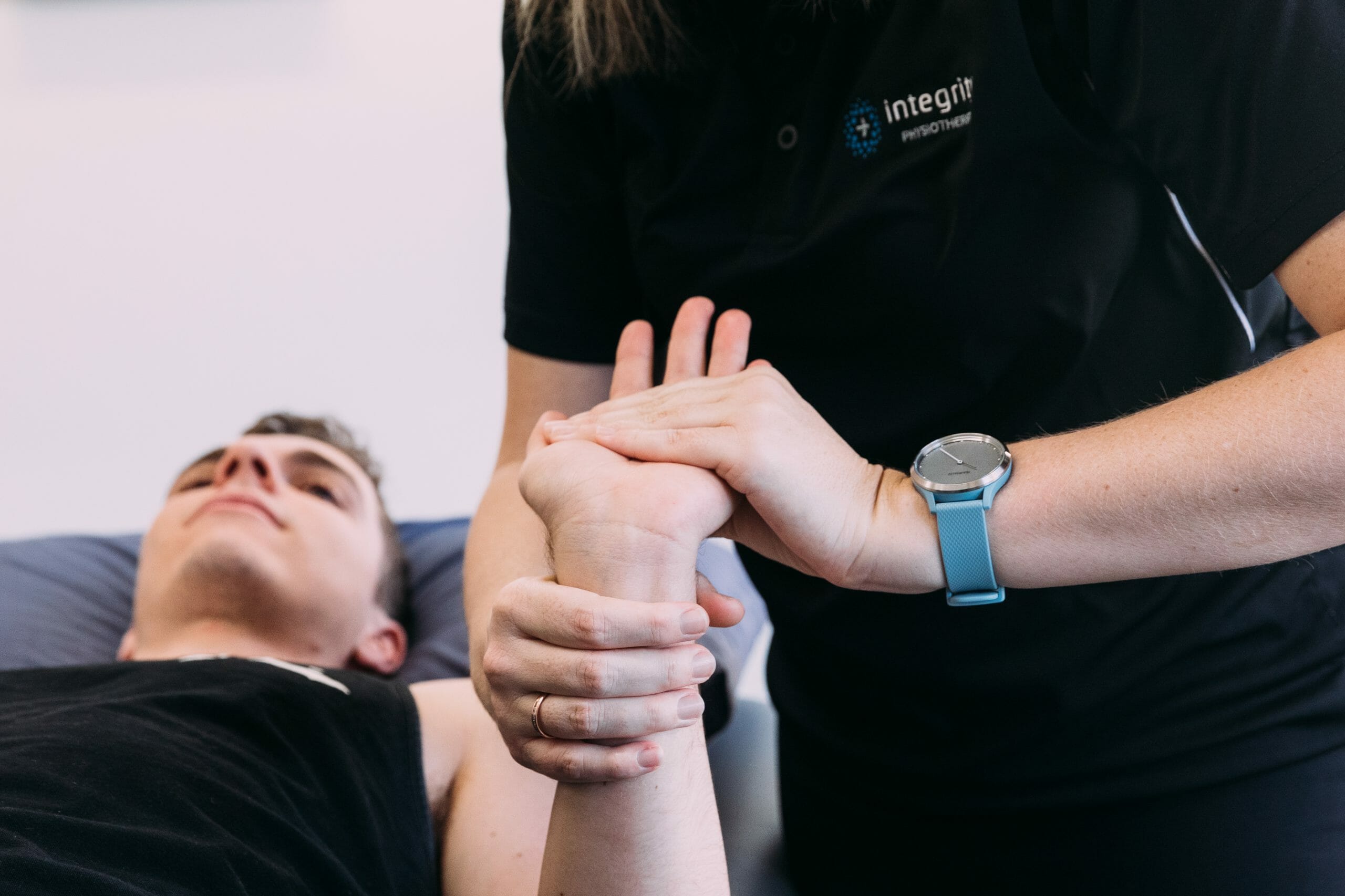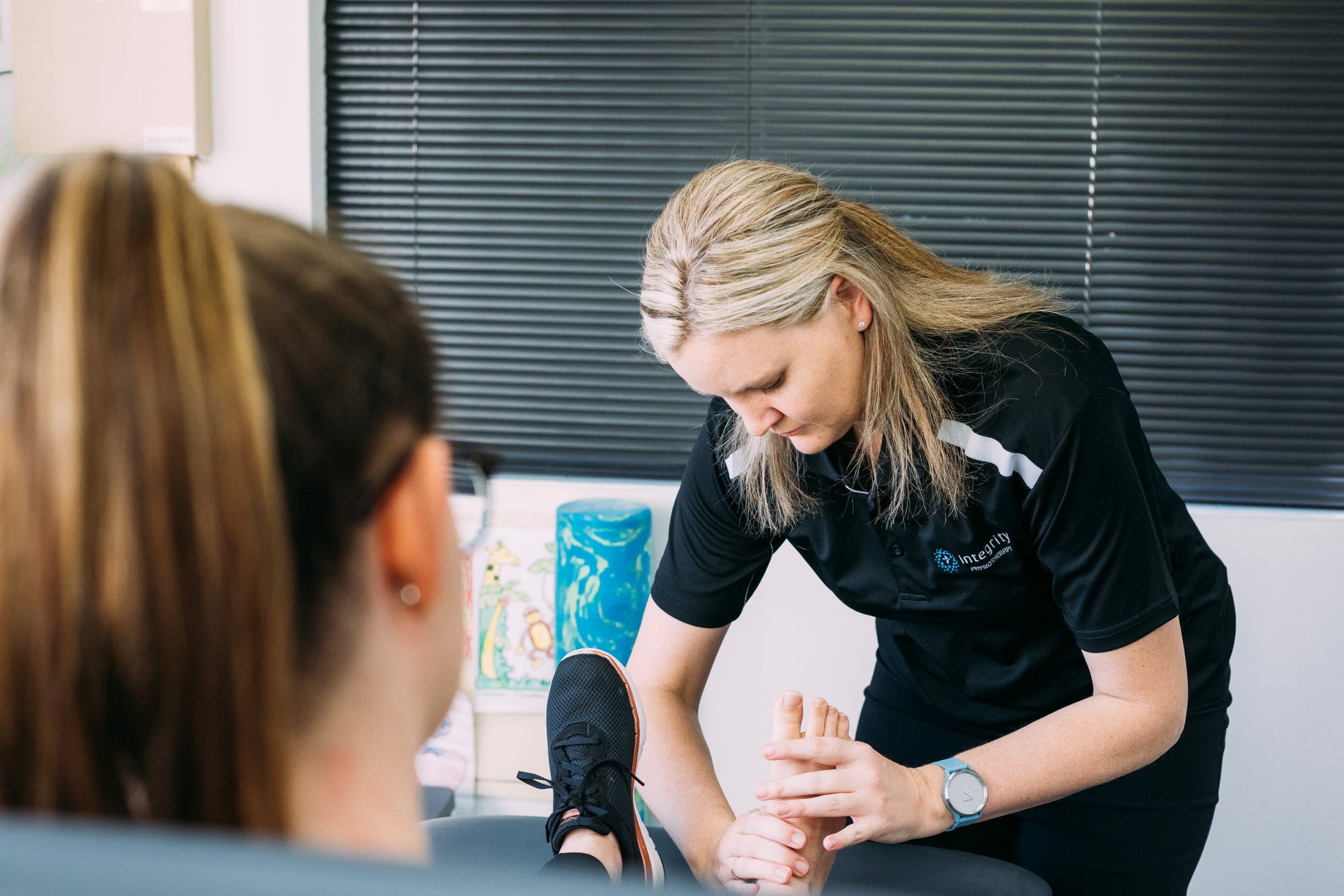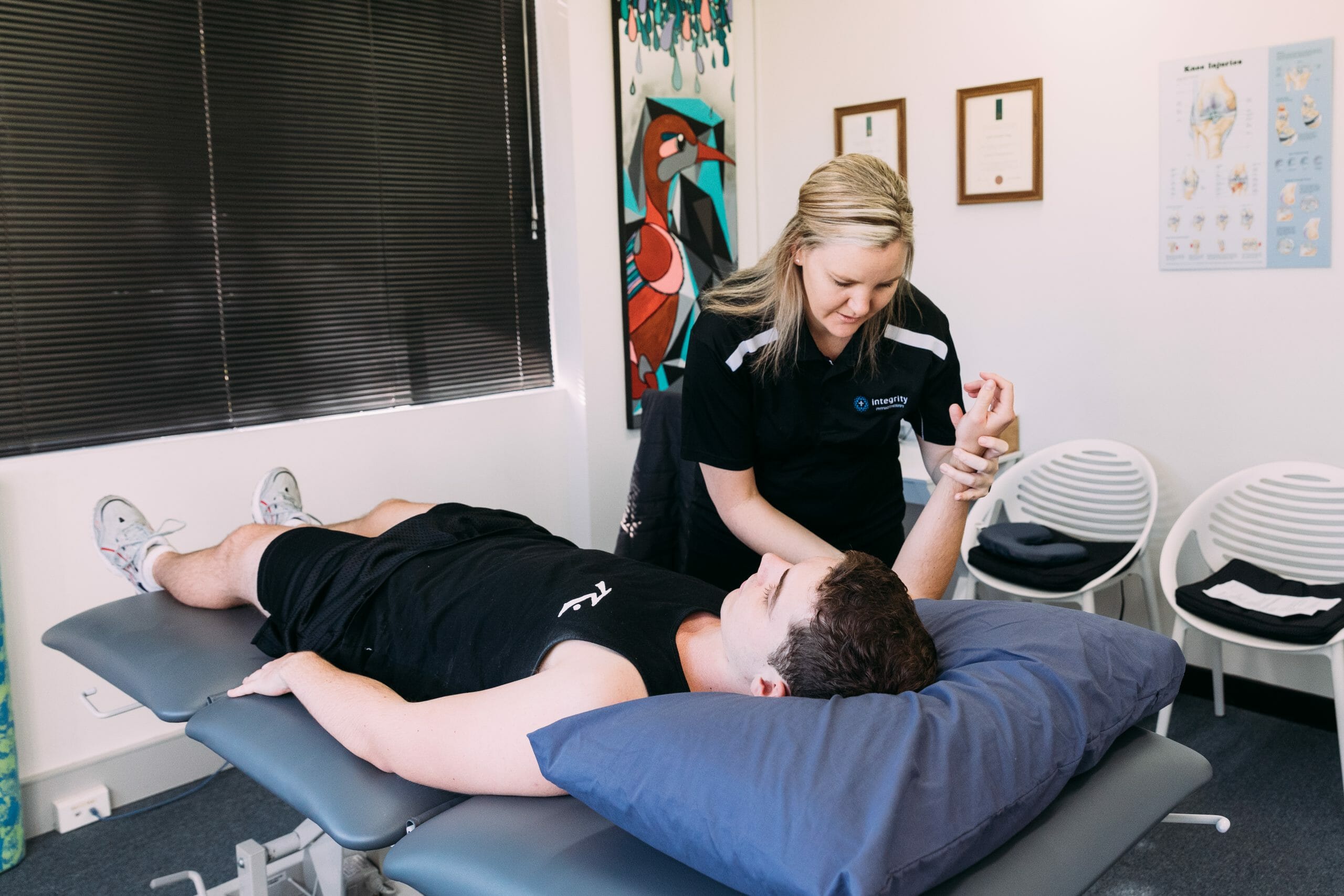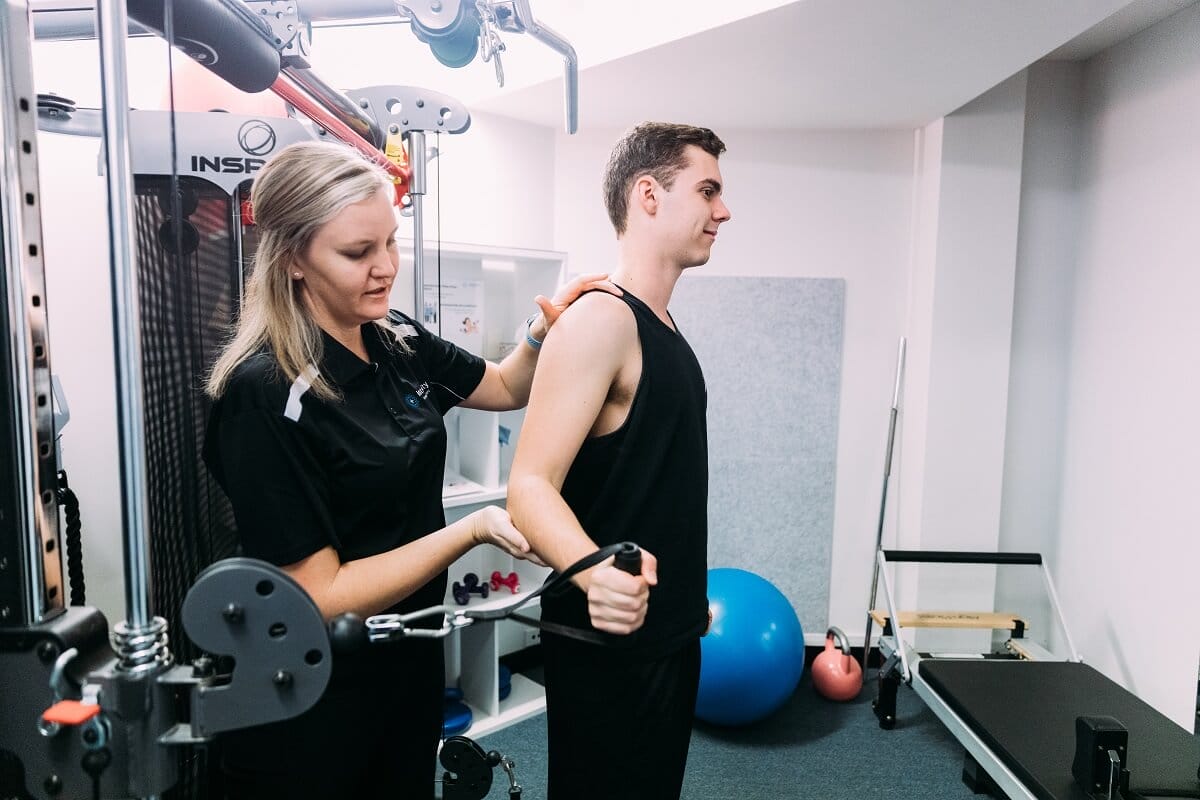
Arthritis causes damage to the joints often resulting in pain and stiffness. These conditions can affect almost every joint in the body and other structures near the joints are also commonly affected. As mentioned above, there are many forms of arthritis which affect the body in various ways.
Arthritis can be frustrating, but tailored physiotherapy treatment can help with pain and increased mobility. Book an appointment with our experienced physios today!

Osteoarthritis
Osteoarthritis (OA) affects the entire joint including the bones, ligaments, cartilage and muscles. OA is often referred to as a wear and tear condition, however, it is now thought to be due to the joint working too hard to repair itself. OA sometimes gets confused with osteoporosis; however, osteoporosis differs from OA. Osteoporosis is a condition when the bones become brittle or fragile causing them to break more easily. This is sometimes associated with calcium deficiency.
OA most often affects the knee, hip, fingers and big toe joints; however, it can affect any joint in the body. OA occurs most commonly in those over the age of 40, but it can develop at any age, particularly in those who have had a previous joint injury.
OA usually comes on gradually and the symptoms will vary depending on the joints affected. The most common symptoms of osteoarthritis are pain and stiffness in the joints. You may also experience a loss of flexibility and noise in your joints such as clicking sounds.

Rheumatoid Arthritis
Rheumatoid arthritis (RA) is an autoimmune disease. Autoimmune diseases occur when your immune system attacks your own healthy tissue. In the case of RA, your immune system attacks the lining of the joints resulting in damage and inflammation.
RA usually affects small joints such as the feet and hands, although larger joints can be affected such as the knees or hips. The cause of RA is unknown; however, it is more common in those with family history and people who smoke. RA causes symptoms such as joint pain, swelling, stiffness, and tenderness.

Ankylosing Spondylitis
Ankylosing spondylitis (AS) is a type of arthritis that mainly affects the spine. Other joints such as the hips and shoulders can also be affected, however, the sacroiliac joints are most often involved. Sometimes AS affects other areas of the body such as the skin, lungs, eyes and bowel. The onset of AS often begins between 15 and 45 years.
The causes of AS are unknown. However, there is a gene associated with AS, and a family history makes it more likely to occur. AS causes back pain, stiffness, neck pain and pain in the tendons or ligaments. With early diagnosis, AS can be managed effectively.
Arthritis: symptoms and treatment options
What is arthritis, and how can physiotherapy help? Read on for more info.
Arthritis can be treated in various ways depending on the severity and stage of development. Treatment will also depend on the age of the person affected, as well as specific issues relating to the joints in question. Here are the three main treatment options available:
- Medication is often used as a way of managing and treating arthritis. Specific medications can target pain and inflammation, along with managing and regulating the body’s immune response.
- Surgery can replace a joint or realign bones to improve function. Surgery is always a last resort, and will only be recommended by your doctor or physiotherapist after other measures have already proven ineffective.
- Physiotherapy helps manage and improve symptoms, regain range of motion and improve flexibility.
Physiotherapy can help in several ways, from understanding how arthritis affects the body, to physical manipulation, targeted exercises, and massage or other manual treatments. Physiotherapy aims to achieve the following outcomes when dealing with arthritic conditions:
- Reduce pain and swelling
- Managing daily routines
- Improve fitness
- Increase mobility and range of movement
Treating arthritis with physiotherapy can have many benefits including a more balanced lifestyle, better control of mobility, pain management, and improved posture. A qualified physiotherapist will be able to reduce your symptoms and help you improve your level of function. Part of the treatment is implementing a plan that can alleviate immediate pain and mitigate future risks. Arthritis sometimes progresses with age, and managing symptoms well with the right strategies is important. Even if you do experience periods of arthritic pain, this is not an indication that you will have ongoing pain in the future. Manage symptoms early and work with your physiotherapist to develop a preventative program. Physio for arthritis means better control over routines and more time spent doing what you love.
A physiotherapist will employ a combination of techniques to assist with overcoming pain and swelling. These include:
- Physical exercises and stretching to improve mobility and strength
- Massage therapy and dry needling to reduce muscle tension
- Hydrotherapy
- Manual therapy
- Walking aids and braces
Physiotherapy also works as a preventative measure in lowering the risk of developing arthritis in the first place. Maintaining healthy bones throughout a lifetime will require the right kind of exercise and strengthening program. Physiotherapy isn’t just good at treating existing conditions and symptoms, it also helps optimise the body’s joints over the long term.
These common types of arthritis can be effectively treated through Perth physiotherapy. Physio for arthritis in Perth can use various techniques to help improve symptoms. Physio for arthritis in Como aims to improve joint range of motion, reduce pain and stiffness, increase strength and help you to perform daily activities with ease.
If you would like more information about Physiotherapy for arthritis in Como, contact our friendly staff at Integrity Physio.




